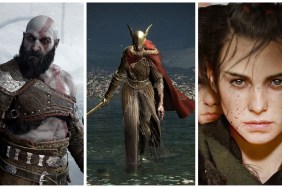Please lose and never find.
First, I must empathize with the developers, not for what I’m about to say for the next ten to every paragraph, but for having to deal with the words “Infinite Undiscovery” on a daily basis for the last however many (undiscovered?) years. Before popping the disc into the tray, I lounged back on my couch and took a few minutes…
-
High production values
-
Strong story concept
-
. . .that is horribly executed
-
. . .and horribly voiced.
-
Innovative battle system
-
. . .that is buried underneath a mess.
-
Not knowing where to go and what to do.
-
Cannot use secondary characters?










